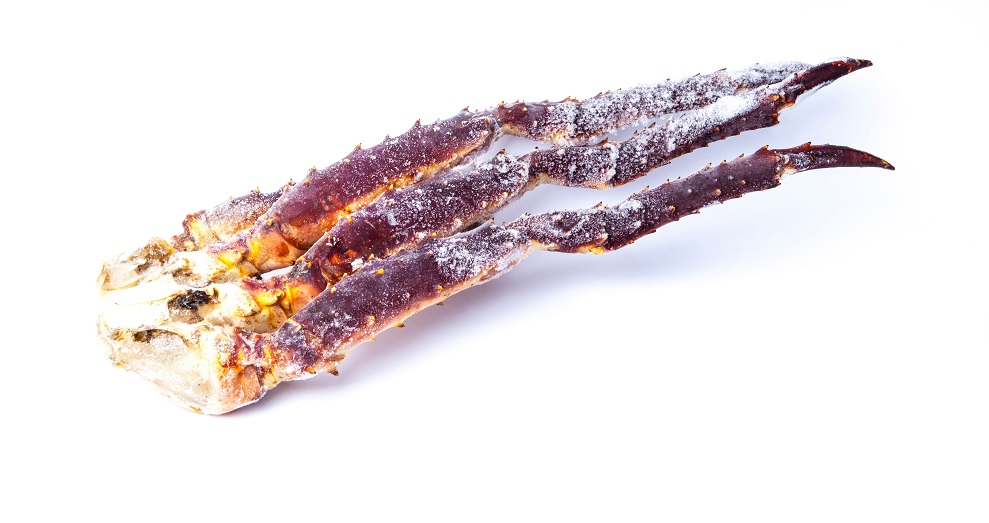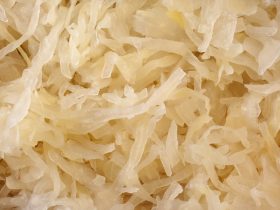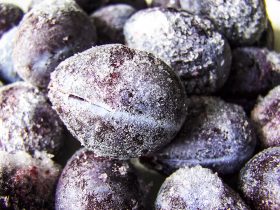While the term crab refers to a massive variety of crustacean animals based on both land and sea, the culinary usage of the word instead refers to a small sub-section of these species that are readily eaten in most countries across the globe.
Crabs are such a popular dish that they compromise up to twenty percent of all crustaceans captured by fishermen. At nearly one and a half million tons fished annually, it is not unusual for home chefs and restaurants to purchase large amounts of crab to cook over long periods of time1.
Yes. Like most seafood, crabs freeze rather well, though this will degrade their quality somewhat as is the case in all frozen organic food. At temperatures of 32°F or lower, crabs will keep for a significantly longer time than if you were using any other method.
What is the Ideal Temperature to Store Raw Crab in?
Owing to the particular macronutrient makeup of most forms of seafood, they are often perfect hotbeds for the development of fungi and bacteria when placed in the improper storage conditions. It is because of this particular reason that it is important to ensure your crabs are stored in only the safest possible temperatures, as consuming them when kept in the wrong circumstances will prove harmful.

In the distinct case of storing raw crabs, it is vital to keep them at a temperature at or below 40°F, which is slightly lower than the average temperature of most commercially available home refrigerators.
In order to ensure that your refrigerator or freezer is accurately reaching these temperatures, utilize a thermometer or one that comes with the appliance itself.
How to Store Crabs for as Long as Possible?
Ideally, to keep your crabs shelf-stable and edible for the longest possible period of time, it is advisable to first purchase them while they are still alive, as the crabs will not develop any sort of microorganism infections so long as they are still living.
After purchasing the live crabs, leave them in a damp container lined with wet tissue or similar material for up to two days within the crisper division of your refrigerator.
After the two days are up, kill the crabs and follow the section below in order to freeze them for as long as possible.
How to Prepare to Freeze Crabs
Freezing crabs is the most worthwhile decision to make when choosing to store the crabs for an extended period of time, as simply storing raw crab in the fridge will not keep it for anywhere near the length of time it would last in the freezer.
To begin, you must first gather together a sufficiently large enough cooking pot, a pair of tongs or similar implement, a colander or steam basket, a cloth towel, resealable plastic pouches, a knife and aluminum foil.
While this list may be extensive, each piece of equipment will be vital to keeping the crabs edible for as long as they possibly can be.
Freezing the Crabs
First, thoroughly wash the crab’s shells, removing any sea-based parasites, dirt or sand that may be still clinging to the surface of these shells. To do this, hold the crabs beneath a running faucet of tap water and scrub with your fingers.
As you are washing the crabs, prepare a pot of water and bring it to a boil on the stove. In order to accelerate this reaction, cover the pot.
When the water begins to boil, utilize your tongs and carefully place the crabs beneath the surface. Cook the crabs within the boiling water for thirty minutes or until they have been thoroughly disinfected and heated to their centers.
Once completely cooked, place the crabs in your colander or steam basket and run under the tap. Set the temperature as low as possible so as to ensure the crabs cool off very quickly. In order to determine whether the crabs are sufficiently cold, lay your fingers against the shell. If it is too hot to touch, continue to run it beneath the cold water.
This step is to ensure that no excess steam condenses within the bag and forms ice crystals, which may both rupture the bag and make it difficult to thaw the crabs once removed from the freezer.
After cooling your crabs, place them on the counter and dry with a washcloth. Using a kitchen knife or a pair of heavy-duty scissors, remove all sharp edges of the crabs’ shell, as this will damage the resealable plastic pouch they will be stored in.
Once the sharp edges have been removed and the crabs have been cooled enough, cut the crabs into pieces in accordance to your preference. Place the individual pieces of crab into the resealable plastic bag, ensuring that no moisture or steam enters the bag if possible.
Push any excess air out of the bag before placing it in the deepest part of your freezer, far from any sources of moving air such as vents or moving fans, as these will cause freezer burn.
Stored in this way, your crabs will last as long as six months.
Will Freezing Crabs Ruin them?
If cooked and kept in their shells, crab meat will generally withstand freezing quite well, though this is not to say that doing so will keep them at their absolute best quality.
Generally, when organic food such as animal meat or vegetables are frozen, water present within their cells will expand, damaging them from within. This translates to a loss of texture and quality from a culinary standpoint.
The steps taken in the previous section are meant to reduce this particular effect from occurring as much as possible.
Once again, it is still best to purchase fresh crabs and to subsequently consume them immediately, as this is the only way to have crabs at their absolute best possible quality. However, freezing crab is a regular occurrence and almost entirely necessary for running a business like that on a food truck.
Signs that Crab has Gone Bad
Like all seafood, if you suspect that your crabs have been subjected to improper storage procedures or are otherwise suspicious of their current edibility, it is important to first inspect them for any signs of spoilage. Crabs are extremely harmful to one’s health if they are consumed once they have gone bad.
The most noticeable sign of your crabs spoiling is a sour or otherwise rotting smell emanating from their flesh. If you notice this, it is best to throw the crabs in the trash as soon as possible, as even just leaving the rotting crabs on your counter may contaminate other surfaces and foodstuffs.
Visually, if the crab meat has begun to change color, such as if it were to turn a dark blue or gray, this is also a sign of the crab being colonized by bacteria and fungi. Once more, immediately dispose of this crab, and do not eat it.
References
1. “Global Capture Production 1950–2004”. Food and Agriculture Organization. Retrieved 2006-08-26.
2. Unknown author (August 2020) “Selecting and Serving Fresh and Frozen Seafood Safely” United States Food and Drug Administration Consumer Resources





Hi, I'm Dom
Dom Eats was started to help other people fall in love with food. While cooking can feel intimidating, it doesn't have to be.